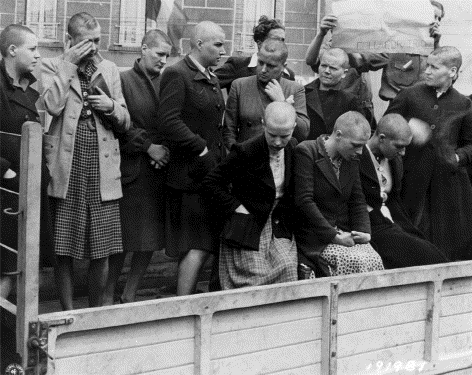saxitoxin wrote:It should be questioned whether the National Guards still meet the constitutional definition of Militias.
The role of militia, also known as military service and duty, in the United States is complex and has transformed over time.[1] The term militia can be used to describe any number of groups within the United States. Primarily, these fall into:
The organized militia created by the Militia Act of 1903, which split from the 1792 Uniform Militia forces, and consist of State militia forces, notably the National Guard and the Naval Militia.[2] The National Guard however, is not to be confused with the National Guard of the United States, which is a federally recognized reserve military force, although the two are linked.
Constitution - Article II - The Executive Branch Section 2 - Clause 1:The President shall be Commander in Chief of the Army and Navy of the United States, and of the Militia of the several States when called into the actual service of the United States. [Article 2,Section 2 of the US Constitution]...
The reserve militia[3] or unorganized militia, which is presently defined by the Militia Act of 1903 to consist of every able-bodied man of at least 17 and under 45 years of age who is not a member of the National Guard or Naval Militia.(That is, anyone who would be eligible for a draft.) Former members of the armed forces up to age 65 are also considered part of the "unorganized militia" per Sec 313 Title 32 of the US Code.[2]
The National Guard (or National Guard of a State) differs from the National Guard of the United States; however, the two do go hand-in-hand.
The National Guard is a militia force organized by each of the states and territories of the United States. Established under Title 10 and Title 32 of the U.S. Code, state National Guard serves as part of the first-line defense for the United States.[35] The state National Guard is divided up into units stationed in each of the 50 states and U.S. territories and operates under their respective state governor or territorial government.[36] The National Guard may be called up for active duty by the state governors or territorial commanding generals to help respond to domestic emergencies and disasters, such as those caused by hurricanes, floods, and earthquakes.[36]
The National Guard of the United States is a military reserve force composed of state National Guard members or units under federally recognized active or inactive armed force service for the United States.[37][38] Created by the Militia Act of 1903, the National Guard of the United States is a joint reserve component of the United States Army and the United States Air Force. The National Guard of the United States maintains two subcomponents: the Army National Guard of the United States [37] for the Army and the Air Force's Air National Guard of the United States.[37]
The current United States Code, Title 10 (Armed forces), section 311 (Militia: Composition and Classes), paragraph (a) states: "The militia of the United States consists of all able-bodied males at least 17 years of age and, except as provided in section 313 of title 32, under 45 years of age who are, or who have made a declaration of intention to become, citizens of the United States and of female citizens of the United States who are members of the National Guard."[39] Section 313 of Title 32 refers to persons with prior military experience. ("Sec. 313. Appointments and enlistments: age limitation (a) To be eligible for original enlistment in the National Guard, a person must be at least 17 years of age and under 45, or under 64 years of age and a former member of the Regular Army, Regular Navy, Regular Air Force, or Regular Marine Corps. To be eligible for reenlistment, a person must be under 64 years of age.(b) To be eligible for appointment as an officer of the National Guard, a person must - (1) be a citizen of the United States; and(2) be at least 18 years of age and under 64."
These persons remain members of the militia until age 64. Paragraph (b) further states, "The classes of the militia are: (1) the organized militia, which consists of the National Guard and the Naval Militia; and (2) the unorganized militia, which consists of the members of the militia who are not members of the National Guard or the Naval Militia."[40]
Since the Militia Act of 1903 Many states have created and maintained a reserve military force known as state defense forces (Some states refer to them as state military reserve, state guard, or foot guard). They were created to assist, support and augment National Guard forces during peacetime conditions. Also during the call up of National Guard forces for wartime deployments, state defense forces can be used to assume the full military responsibilities of the state. Their mission includes the defense of the state and the enforcement of military orders when ordered by their Governor.
Throughout the 20th Century, state defense forces were used in every major war. New York Guard Soldiers patrolled and secured the water aqueduct of New York, mass transit areas, and were even deployed to France to assist in logistical operations in World War I. Texas State Guard Soldiers suppressed a riot and maintained peace and order in Texas throughout World War II.
Today state defense forces continue to assist, support and augment the National Guard of the state. They provide logistical, administration, medical, transportation, security, and ceremonial assistance. Some States have provided additional support such as The New York State Defense Force (New York Guard) providing its Soldiers to help support and augment The National Guard CERFP Team. The California State Military Reserve provides the National Guard with Soldiers to assist with military police training and the Alaska State Defense Force constantly provides armed military police troops to assist with the security of Alaska.


 you should buy a premium membership.
you should buy a premium membership.